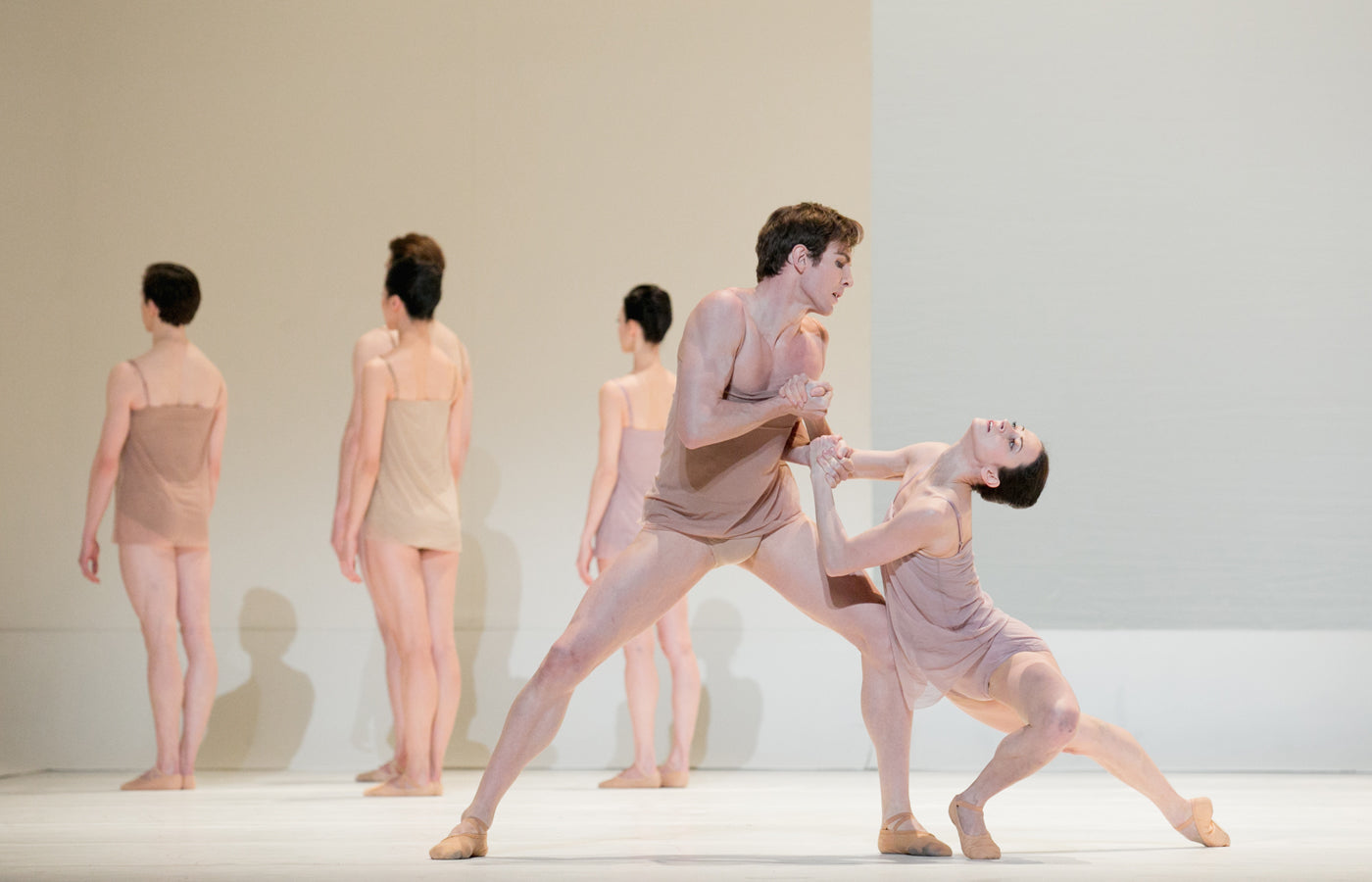They danced, for the first time, George Balanchine’s “Allegro Brillante,” a lesser known gem from 1956 in the Balanchine oeuvre, but one thought to cover it all—so said Mr. B himself: “everything I know about classical ballet in 13 minutes.” The curtain goes up and they are already dancing; four girls in pastel dresses waltz around their partners. A central couple join them shortly after, and the lustrous dance, to Tchaikovsky’s third piano concerto, collects. On the first evening, principal Xiao Nan Yu gave a glittering performance, precise and energetic. Everything seemed just right with her, made even more right by McGee Maddox, with solid partnering, and musical flow.
At the matinee, soloist Elena Lobsanova danced the lead girl, partnered by corps dancer Francesco Gabriele Frola. Lobsanova has several principal roles in her repertoire, but this year, she looks like a principal: polished, with superb lines. Frola shines as a soloist, with devil-may-care leaps and turns. In partnering he is about repose, barely moving, letting the girls drift into his hands, giving little smiles as they discover she’s perfectly on balance—and they almost always are.
“Carousel (A Dance),” Christopher Wheeldon’s 2002 piece for the New York City Ballet, was another first. Clever and nostalgic, it is danced to “Carousel Waltz” and “If I Loved You,” of Rogers and Hammerstein’s 1945 musical, “Carousel.”
This time, concentric circles of dancers, moving like a slow mechanism, dipping and curving in Wheeldonisms. In the middle stands a young man, Harrison James on one evening, the spotlight catching his arms casually folded over his chest, and the bright red '50s style kerchief. He stares wistfully out, not yet seeing the young woman, in yellow dress with a matching hair ribbon, promenading on the outside of the circle. It is Jillian Vanstone, the principal dancer with whom Harrison James danced electrically in “Manon,” and happily, they were just as exciting here, the carefree couple connecting the dots in sweet delirium around the stage, before flitting joyously off.
From a cartwheeling corps, and drunken music, a carousel-in-motion is vividly realised, eliciting aahs and a burst of applause from the audience. As the sky turns a rich violet, our couple dance a pulse-quickening pas de deux. They waltz downstage and trade a kiss before tearing off, but in my choose-your-own-adventure ending, they just keep on waltzing.
Hannah Fischer and Ethan Watts, corps dancers, took the lead roles in the second cast. Fischer, with her film-star beauty and long legs, was bold, radiant; you could imagine her quickstepping alongside Fred any day of the week. Some of the choreography was duly swept away by her exuberance, and her lovesickness was more general than directed at her partner (so it goes), but the audience fell in love with her. Watts, a promising dancer, is light on his feet, and I’m looking forward to seeing more at the Erik Bruhn prize, when they compete on behalf of the company in March.
The dancers scuff their boot heels on the stage, as though to kick up dust, keeping a steady rhythm, as Johnny Cash's aged and gravelly tones reverberate through the theatre. The title ballet, James Kudelka's ode to the country music legend, “The Man in Black” deploys four denim clad dancers to six covers by the singer, pacing out melancholy, joy and redemption.
The second cast of Stephanie Hutchison, Patrick Lavoie, McGee Maddox and Jonathan Renna were the more harmonious. The energy was just so. Hutchison in the number “Sam Hall” is unforgettable, with a mean-as-sin look on her face, she grits and bares her teeth, and sends her boots up to her ears. “Hurt,” Trent Reznor for the Nine Inch Nails, is another that lingers, and Bruce Springsteen's “Further On (Up the Road)” is the one carrying us home, with silent claps ghostly in themselves.
This was the company’s third occasion dancing McGregor's wonderfully bizarre “Chroma.” Ten dancers, six men and four women, move in synthetic ways, kitted out in flesh-coloured tunics, in what looks like a macbook, a light-reflecting cube with a piece cut out in the back. The subject of the ballet, if anything, collides with McGregor’s choreographic style, a hyper-physical extrapolation of classical dance. The ballerina's body is elevated and abstracted—the house gasps as Tanya Howard’s leg cranks into an obtuse angle. Everything else is paired back; the dancers all wear neutral expressions, a bit modelesque, and if it's about showing off, it's about voyeurism too. Svetlana Lunkina's ready-set-pounce ethic is the way to go; catching the hits in Joby Talbot’s arrangement of seven songs from the White Stripes’ “Aluminium” album, which has been described as “James Bond and Jaws fighting tooth and nail in the ocean—” where to go from there? The answer is faster, higher.




comments